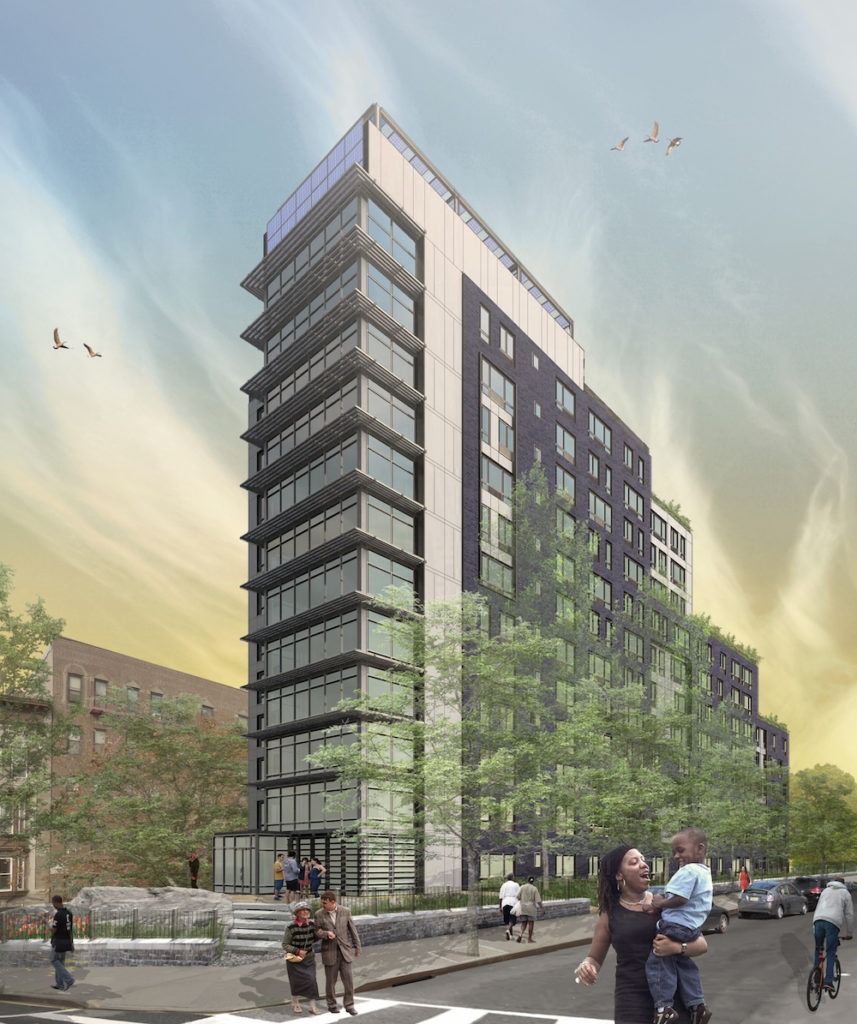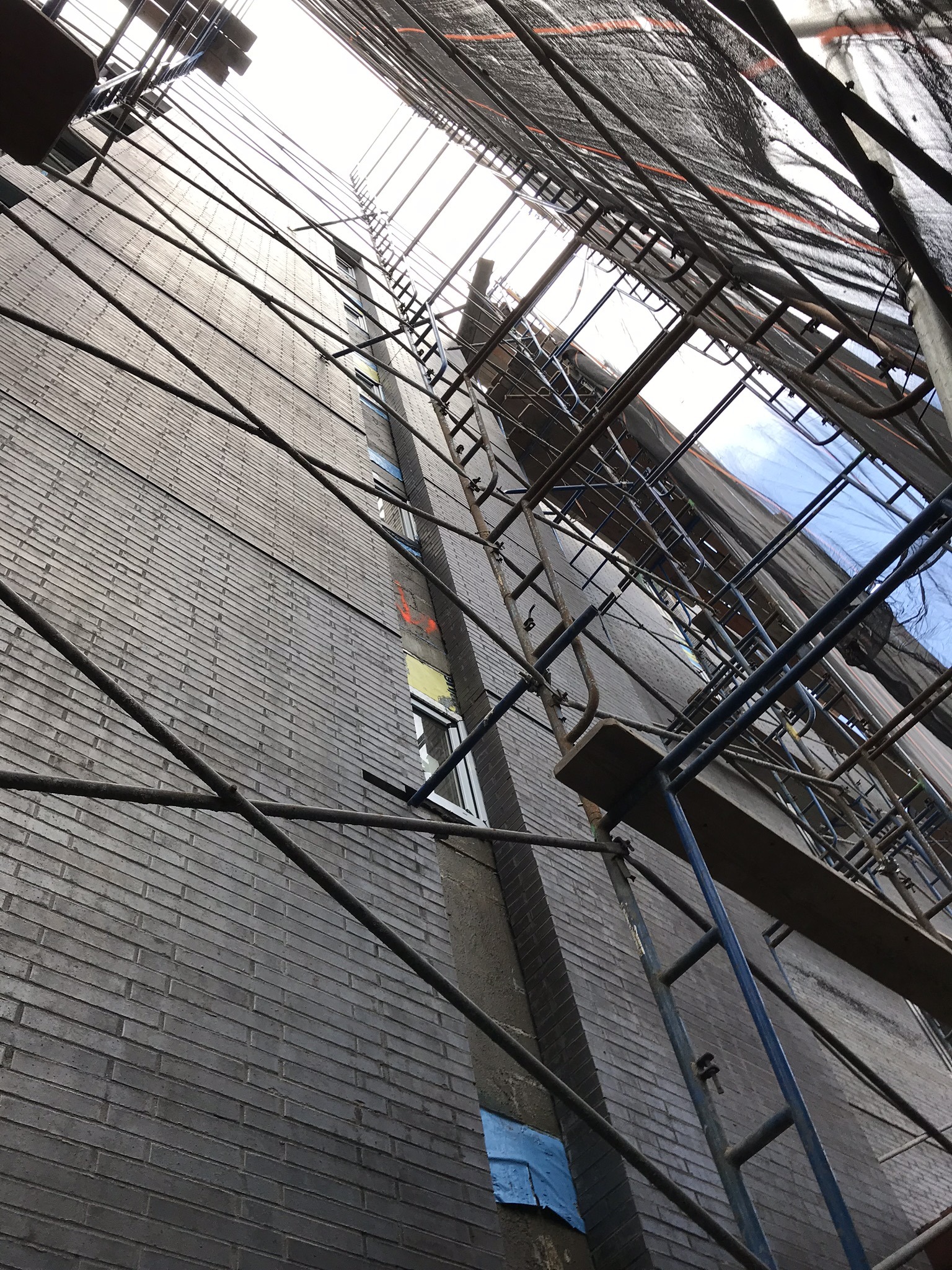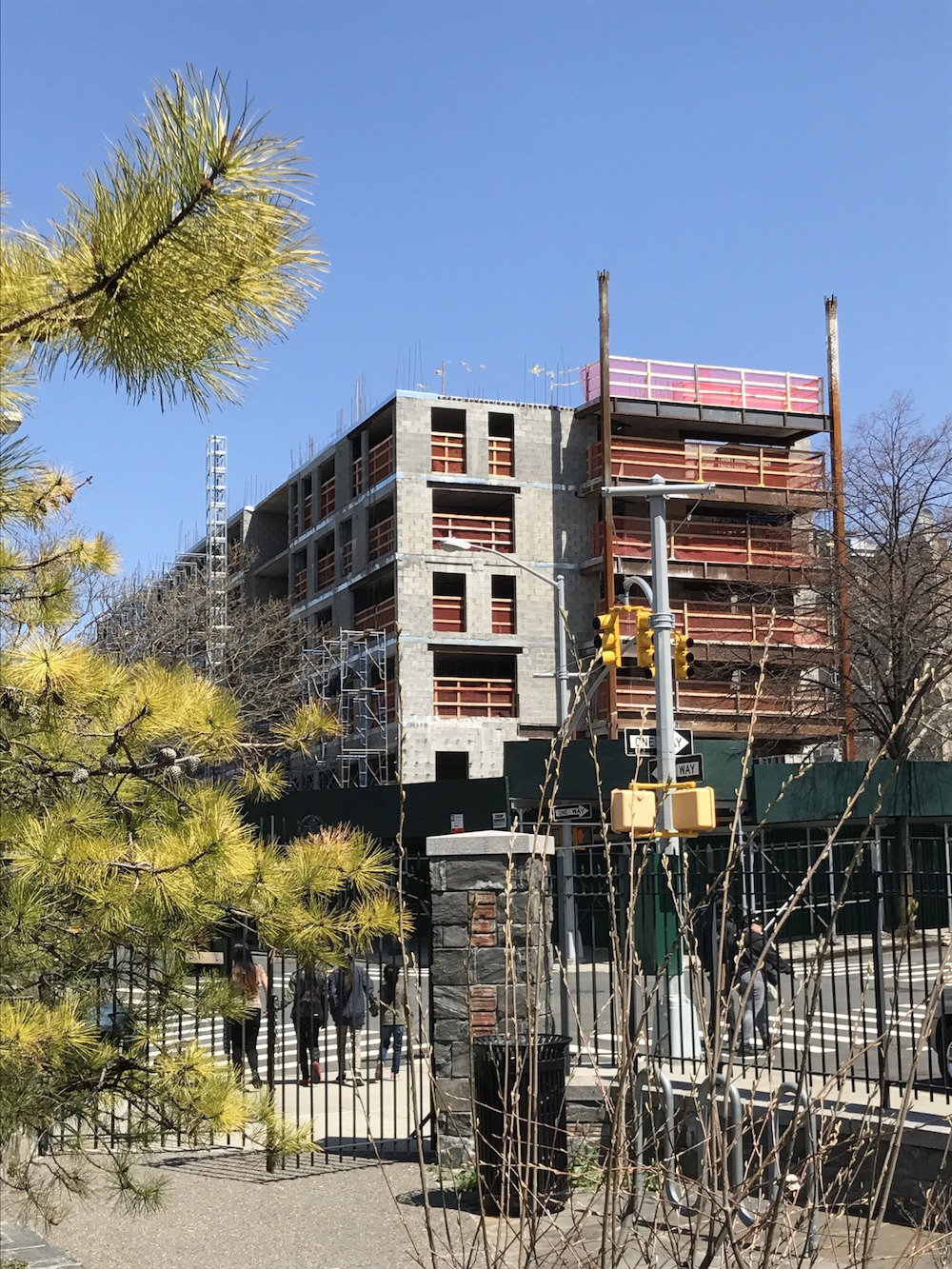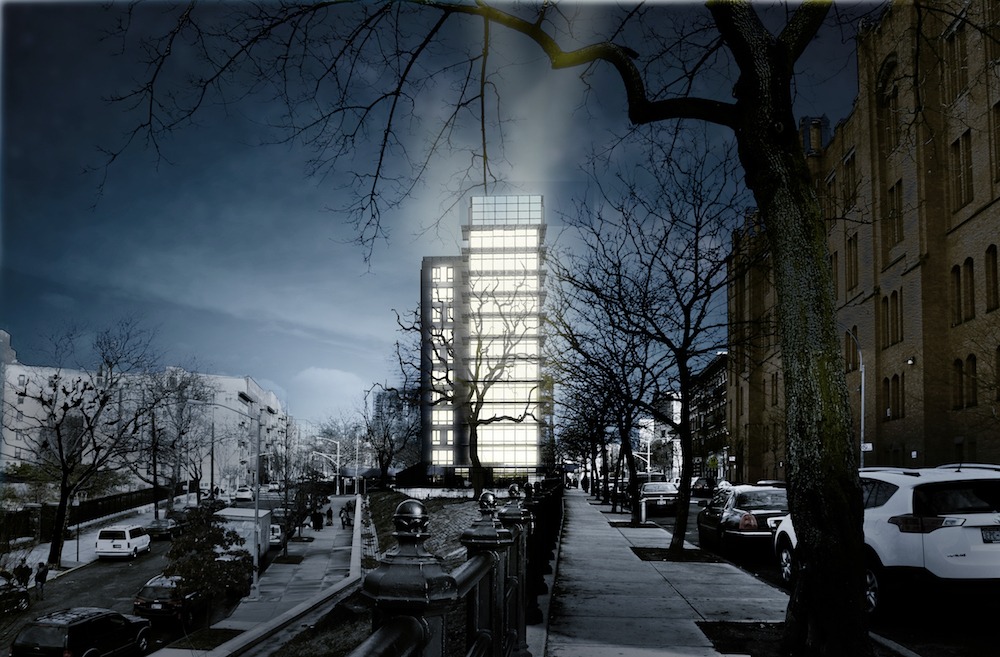Words: Beth Newhart
Photos: Magnusson Architecture and Planning
In the Morrisania neighborhood of the South Bronx in New York City, the site of the old St. Augustine’s Church and school building is being given a second chance. A new 13-story structure is nearing construction completion, with a chocolate brown facade and beaming floor-to-ceiling windows.
St. Augustine’s Church was a Roman Catholic parish founded in 1849. The Baroque and Renaissance Revival church itself was built in 1894, but after 117 years of serving the community, the church struggled with low attendance, high maintenance fees, and impossible structural repairs. St. Augustine’s decision to merge with nearby Our Lady of Victory Catholic church, closed in 2011 and was ultimately demolished in 2013.
In 2018 a new era emerges when St. Augustine Apartments opens on its spot. The massing of the mixed-use residential building will run north to south as did the old church. It features 112 units and 16,447 square feet of community space.
According to Principal Fernando Villa, of Magnusson Architecture and Planning (MAP), the complex will be 100% affordable family housing, offering incredible views of the Manhattan skyline. The design targets LEED Gold Certification and will push efficiency throughout the design. The installation of a PV array pergola that wraps down onto the south façade in a vertical PV array will contribute to the energy-efficiency. It will appear like a crown at the top of the building.
It’s a large undertaking to replace a beloved community church that was a neighborhood fixture for more than 100 years. But MAP have committed to the mindfulness of such a sensitive project in more ways than one. The affordability of the apartments reflects the economic needs of the neighborhood. According to NYC Housing Connect, a special lottery is being offered to applicants with qualifying incomes for 76 budget-conscious units targeting low-income families, with 35 additional supportive housing studio units for formerly homeless individuals.
The design results in a stunning complex that residents and neighbors alike can be proud of and can fill the void of monumentality and iconic presence left by the church. For the masonry, MAP selected a dark iron-spot Roman brick by Glen-Gery with matching dark mortar. The brick has a shifting two-tone appearance It fluctuates between a rich chocolate brown and a slightly purple opalescence, depending on the angle of your view and position of the sun.
Laying out the 1/3 running bond to accommodate window placement without leaving tiny slivers of brick at the openings was a challenge for the mason at first. But the extra time and attention to detail was worth it for the end result – only a highly skilled mason could perceive the sporadic adjustments in brick length that was required to maintain the bond pattern. Affordable housing designs rarely include such specifically considered running bond, making the St. Augustine Apartments complex stand out.
The design alternates brick and a silver-hued ACM metal panel, Reynobond FR by Alcoa. The windows stagger across the building facade, accommodating the various pattern and size of the panels. Along the edge of the building facing St. Augustine Park, the elevator lobbies resemble a “beacon of light” that has three sides of floor-to-ceiling windows. The appearance is of ropes of light accenting the corner of the tower.
On the ground floor of the building will be the main entrance, lobby, management office, mail room and 10 apartment units. It will also feature laundry rooms, a multipurpose room and sunlit access to a lawn and playground available to resident children. The St. Augustine Apartments building will be enrolled in the NYSERDA Multifamily Performance Program (MPP). And as a NYC HPD funded project, it will comply with the Enterprise Green Communities certification program.



